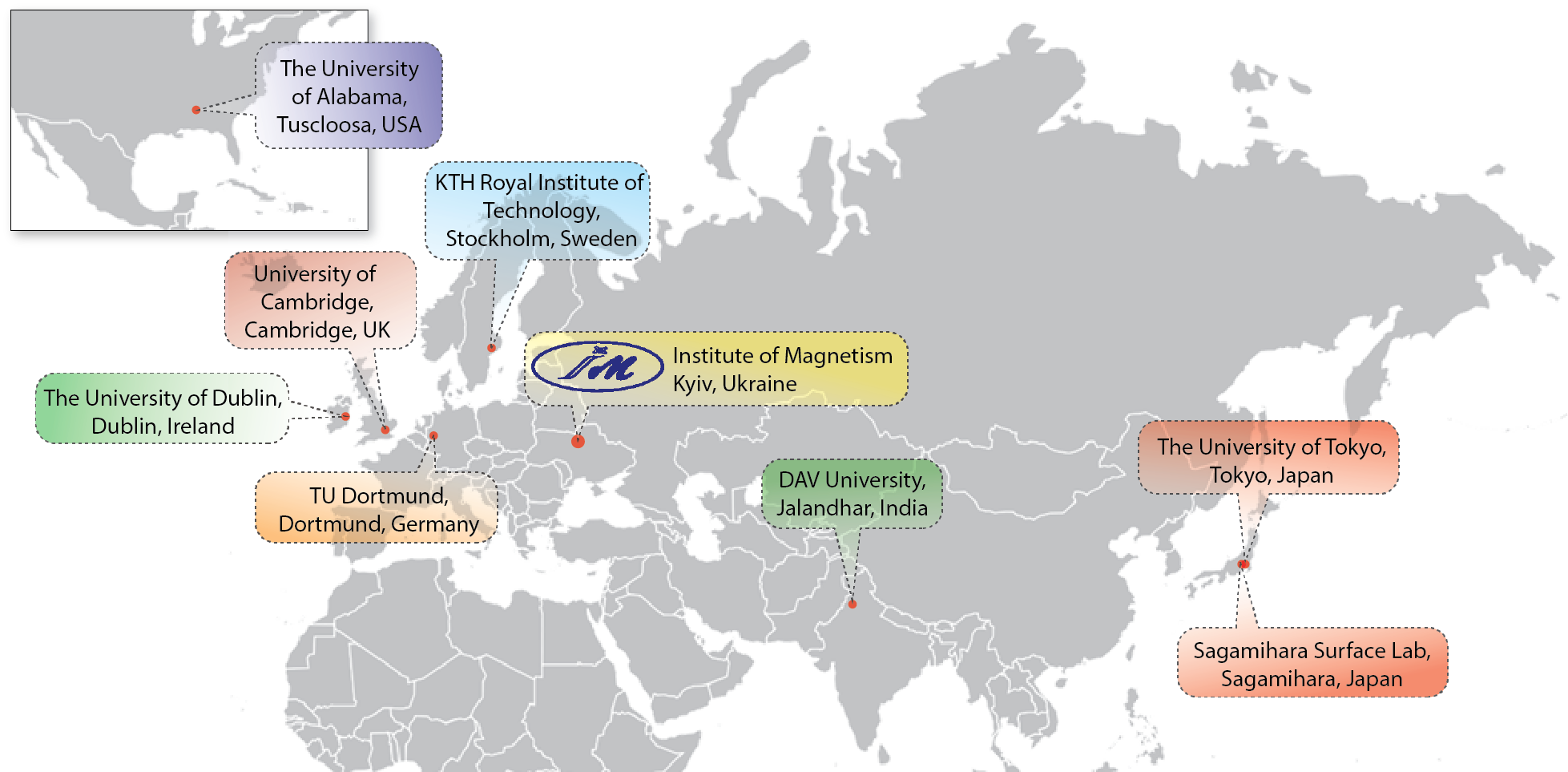Department 02 - Physics of Films

Selected projects:
- 2014-2017 – Joint Ukraine-Sweden Project “Spin-thermo-electronics”
The joint project of Institute of magnetism (Kyiv, Ukraine) and Royal Institute of Technology (Stockholm, Sweden) yielded a number of important results on investigation of thermo-controlled interlayer coupling in thin-film multilayers, in particular, such systems as a modified spin-valve (J. Phys.: Condens. Matter 27, 446003 (2015), Phys. Rev. B 94, 064429 (2016)) and a synthetic antiferromagnet (EPL 118, 37006 (2017), Phys. Rev. B 96, 104427 (2017)). Important result is the design and fabrication of a mesoscopic magnetoresistive device with the thermo-electronic switching between resistance states (Appl. Phys. Lett. 111, 262401 (2017)). - 2015-2017 - Joint Ukraine-India Project “Spectroscopy studies of multifunctional multiferroic materials”.
Multifunctional materials are highly desirable for applications in electronics, information-storage and energy-transformation technologies. On the other hand, such materials are convenient objects for investigation of complex solid-state systems with a strong correlation among different-type degrees of freedom. Active collaboration of scientists of the Department with the research group of Prof. G.S. Lotey from DAV University (Jalandhar, India) have resulted in the demonstration how variations of composition, structure and sample’s size can be used for the control of magnetic, electrical, photocatalytic and other properties of complex perovskite oxides (Catal. Lett. 147, 1640 (2017), J. Mater. Sci.: Mater. Electron. 28, 18236 (2017)). Apart from that, magneto-thermal characteristics and biocompatibility parameters were also studied for nanoparticles of the lanthanum-strontium manganites (J. Magn. Mang. Mater. 442, 423 (2017)). - 2013-2014 - STCU (Science and Technology Center in Ukraine) Project #5714 "Nanostructured left-handed media and magnetotunable elements on their basis for applications in EHF band".
2008-2010 - STCU Project #4912 "Magnetotunable nanostructures with a negative refractive index in millimeter and submillimeter wavebands".
Within the framework of the joint projects of Institute of Magnetism, V.I. Vernadsky Institute of General and Inorganic Chemistry, and O.Ya. Usikov Institute of Radiophysics and Electronics, prototypes of novel passive elements had been developed for the mm and sub-mm radio bands (attenuators, band-pass filters, etc.). In the core of these devices is a microwave media, which under applied magnetic field can change not only the magnitude but also the sign of its reflective index. The transition into the state with negative reflective index (transition into the left-handed state) induces substantial changes in propagation of electromagnetic waves inside the media as well as at the interface with an ordinary (right-handed) material. As a result, such properties imply a broader tuning range in comparison with existing analogues (Appl. Phys. Lett. 95, 082903 (2009), Appl. Phys. Lett. 97, 131912 (2010), AIP Advances 4, 037116 (2014)). - 2007-2009 - STCU Project #4137 “Development of advanced heterogeneous nanostructures on the basis of materials with high spin polarization of electrons for spintronics elements".
- 2004-2007 - STCU Project #3178 “Multilayered ferroelectric - magnetic nanostructures as a basis for novel functional elements of electronic devices".
- 2002-2006 - Project "Physics of magnetic nanostructures with giant magnetoresistance effect ", Russia-Ukraine Intergovernmental Program "Nanophysics and Nanoelectronics".
- 2000-2003 - STCU Project #1086 “Synthesis and electrophysical properties of the hetero-substituted perovskites with extraordinary high variation of electric resistance and sensitive elements on their base”.
- 2000-2001 - CRDF (U.S. Civilian Research and Development Foundation) Project UP2-2117 “Theoretical and experimental investigation of the influence of interface roughness and electronic structure on giant magnetoresistance and spin-dependent tunneling in magnetic multilayers and sandwiches”.
- 1997-1999 - CRDF Project UP1-370 “Theoretical and experimental investigation of colossal magnetoresistance in Mn-containing compounds”.
- 1996-1998 - STCU Project #300 “Development and production of the brand-new type of sensors based on the magnetoresistance effect”.



